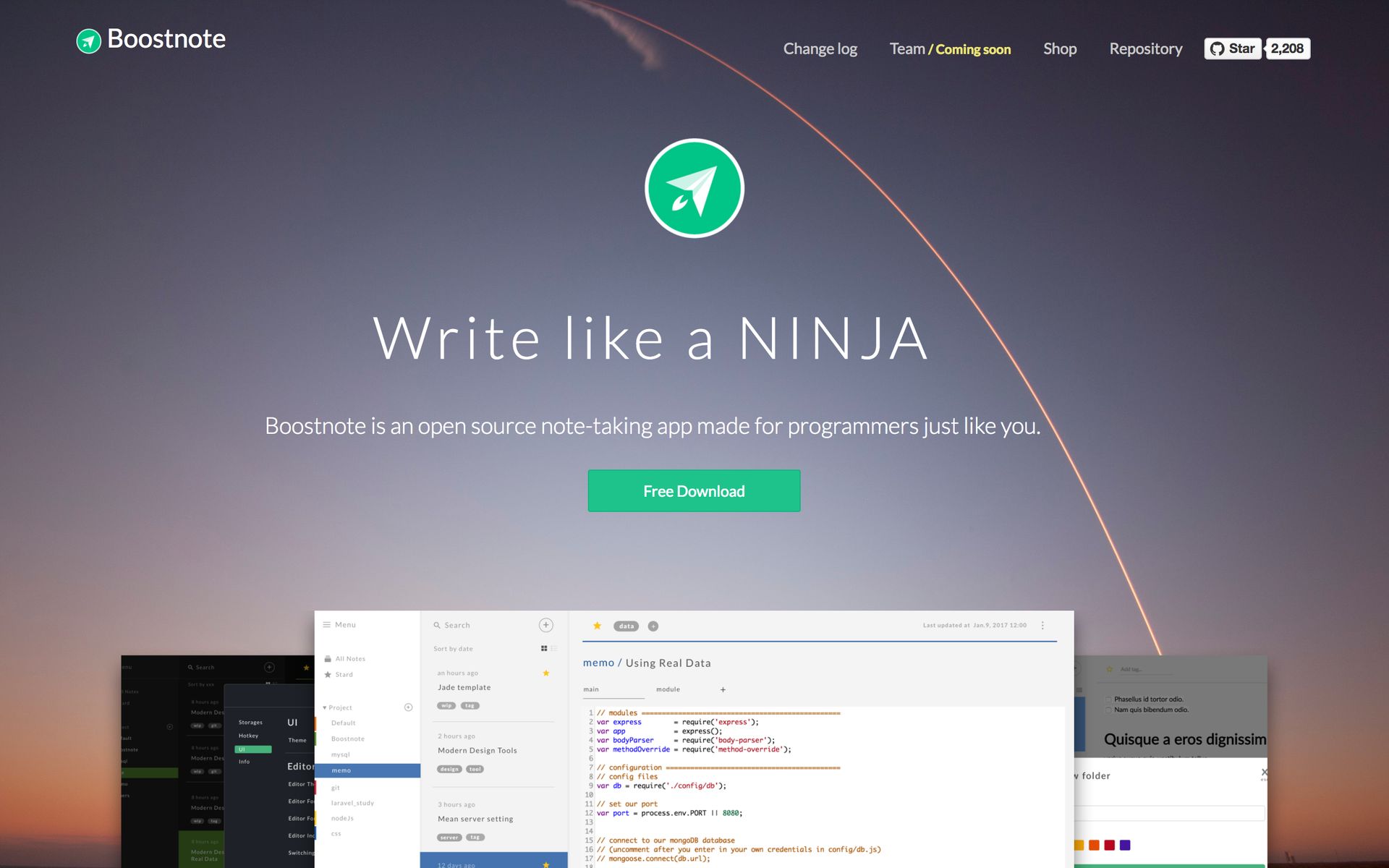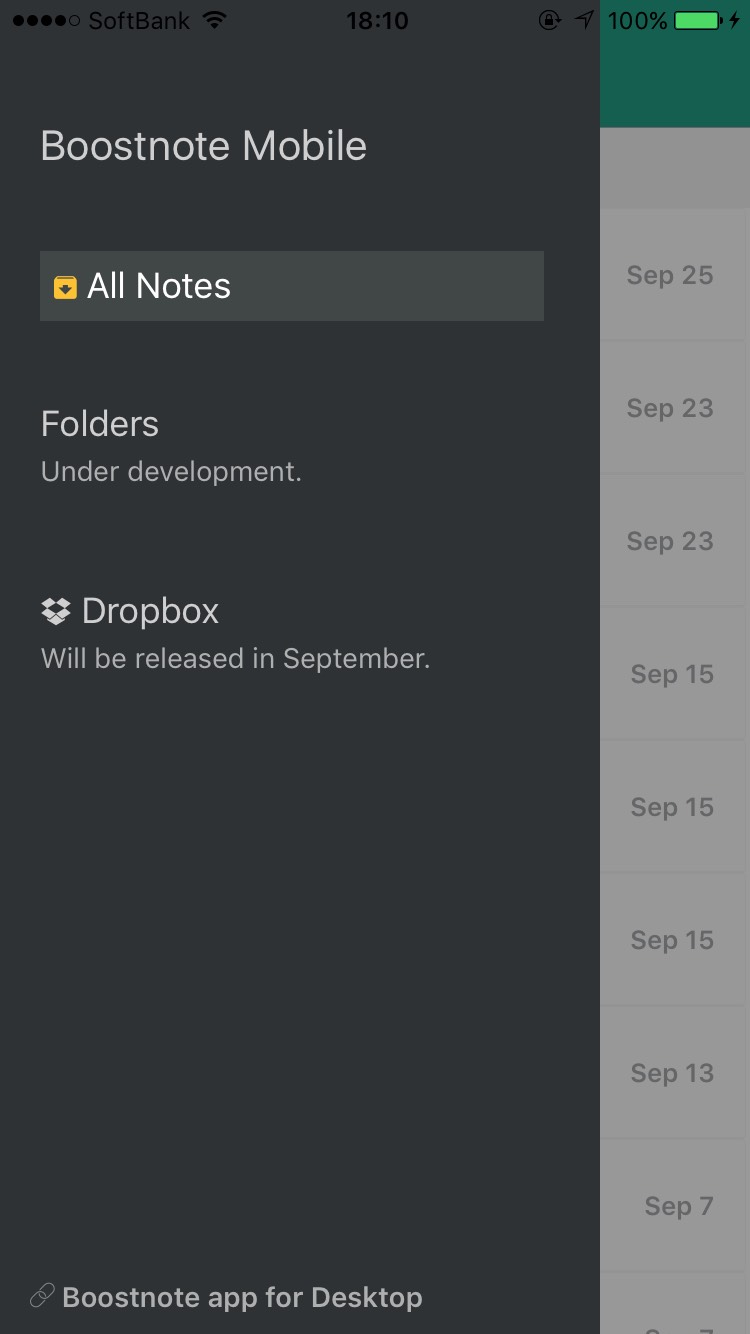

With native apps for both smartphones and computers, app makers enable the 4.5+ billion active internet users to take and save notes digitally and, access them from anywhere in the world. But, thankfully, note-taking apps have taken all the difficulty out of it.Īnd, when you consider the fact that 40% of the world’s timber is being used to make paper, it’s not hard to see why today’s socially aware society is so openly embracing note-taking apps.

That's why I was particularly disappointed when I learned about it's shortcomings.Once upon a time, note-taking used to be a cumbersome process that required lots of writing.
#Boostnote native archive
I was hoping that Boostnote could be a The Archive alternative that I could recommend to Windows-using friends, and at first glance, it did look interesting. And if I look at Slack's "Average Energy Impact" in Activity Viewer, it turns out that only my web browser (which currently has 54 open tabs) is above Slack, and Slack's energy impact is as high as the next 6 apps combined. That's pretty crazy for such a simple app. Slack is actually a great example in this regard: I'm only in one channel and that channel only has something like 50-100 messages per day, yet the four Slack processes combined consume a total of 780MB of RAM on my Mac.
#Boostnote native mac
The reason why a lot of Mac users dislike Electron apps is because they are generally are much more bloated / resource intensive (both in terms of memory consumption and CPU/battery consumption), and because they don't behave like native apps in many ways. There are probably hundreds of them and at least 5-10 are actually really good. You could just use any of the existing markdown-based text editors that supports syncing via Dropbox or iCloud. Just to name a few.įunnily, if Boostnote used regular markdown text files, it would not be a problem at all that the iOS version is currently MIA. For instance, Calca is great if you want to do calculations within your notes with Table Flip, you can very easily create and modify tables within your markdown files. There is a gigantic universe of applications that support real plain text markdown note files. It is however exorbitantly more convenient to be able to readily work with your existing notes without the need for conversions. You are right that you could transform/convert your notes if you wanted to work with them in another app, but you could also run docx files through Pandoc to create markdown versions of your notes if you kept them in MS Word. Inline display of images is a planed feature, according to and I am eagerly awaiting its arrival, too. If you set up the "PrettyFunctional (Regular)" theme, you get the best of both worlds, as explained in that thread.

#Boostnote native code
As I wrote in the theme thread I linked to, I vastly prefer a variable-width font for most of my note text (and a fixed-width font only for tables and code blocks). That warning message to not use variable-width fonts is a bit ridiculous and heavy-handed, though. Menlo is actually also a fixed-width font, but one that does support bold & italics. Most fixed-width fonts do support bold and italic characters, only a few (like Monaco) don't. Sorry, rereading what I wrote, I realize that that was a little ambiguous. I essentially have to leave The Archive for that. It's a second application I need to install. The Archive provides a higher fidelity view upon request. But that should not limit the fidelity in which I record my thoughts and findings to just a plain text view. Using plain text with markdown helps to really own my notes (compared to them stored in a DB or in some proprietary format like. So what I expect from a Zettelkasten is that is caters to those needs. I don't make hand written notes anymore either. The input I want to build on comes from different media and has different formats (e.g. In 2018 we're far beyond what Niklas Luhmann was faced with. It needs to deal with all sorts of input. That's what I call "higher fidelity".Ī Zettelkasten is supposed to be a "second brain". But it helps reading them if the markdown actually is transformed in some way so the annotations make a visual difference. Using plain text notes with markdown is great. And the image below that was pasted from the clipboard. Note how the referenced video is shown right inside the zettel. Compare that to (almost) the same zettel in The Archive:īut more importantly I always get a "rendered" version of the note when I switch out of editing mode (by clicking outside the editor window): The markdown is color coded and makes it easier on the eye.


 0 kommentar(er)
0 kommentar(er)
